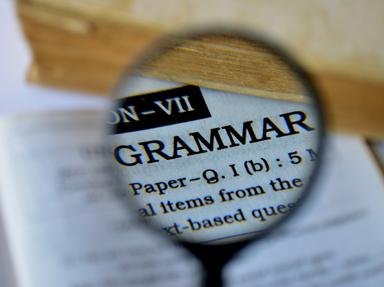Quiz Answer Key and Fun Facts
1. Which of the following words is NOT an alternative slang term for the mark within the star in the illustration?
2. What is a lesser used but correct name for the punctuation mark depicted in the accompanying image?
3. What is the name, according to Standard American English, of the punctuation mark that is used to link two independent clauses or sentences and to separate items in a series already containing commas? Use the accompanying illustration for assistance.
4. Examine the sign at the top of the restaurant in the accompanying photograph. What is the name, according to Standard American English, of the punctuation mark that appears in one of the neon-lit words of that sign?
5. The punctuation mark in the accompanying illustration should not be confused with either the dash or the minus sign as both of these have longer lengths and different functions. Figure out the name of the mark in the illustration, and then answer for me this: which of the following sentences is NOT using that punctuation mark in an acceptable manner, according to Standard American English?
6. What word is typically NOT used in Standard American English to refer to the punctuation marks in the accompanying diagram?
7. What is the name, in Standard American English, for the set of three dots in the accompanying illustration?
8. Consider the accompanying image. Which of the following sentences is NOT using this punctuation mark in a manner consistent with Standard American English guidelines?
9. The punctuation mark in the accompanying diagram is not a traditional mark. It was patented by its creators Paul and Douglas J. Sak so that they could sell it to keyboarders and texters who believed they needed to clarify a particular tone sometimes used in their sentences. Do you know the name of this mark?
10. Many languages use guillemets or angle marks, as shown in the accompanying diagram, as quotation marks. Which of the following languages is NOT known to use guillemets as quotation marks with regularity?
Source: Author
alaspooryoric
This quiz was reviewed by FunTrivia editor
looney_tunes before going online.
Any errors found in FunTrivia content are routinely corrected through our feedback system.

